“I’ve been skiing since the age of seven, and have racked up the miles in over 75 resorts across eight countries,” says Amy Fletcher of ski-holiday specialist Crystal. “With five ski seasons under my belt, I’m as addicted to the snow now as when I first clipped into my 1980s planks for my first ski lesson.”
It’s no wonder then that the subject of ski boots is something that’s close to her heart. Here, with the help of expert boot fitters, she explains how to find a pair that will have you hollering with pleasure, rather than howling with pain.
We all know ill-fitting ski boots can ruin a holiday. If they’re too tight, you’ll lose the will to live by 11am on the first morning, and your toenails will probably drop out two weeks later for good measure. If they’re too loose, you might as well be skiing in flip-flops for all the control they’ll give you over your turns.
How do you side-step the problem? Simple. By buying your own pair, and making sure they’re properly fitted. Here’s how.
1. Don’t wait for the end-of-season sales
It’s tempting to wait until the end of the ski season, when shops sell off unwanted stock at a discount. But that’s a mistake when you’re buying ski boots. The different boot brands all suit slightly different foot shapes, and to maximise your chances of getting a great fit, you need lots of choice – not the winter’s leftovers. Go before the end of January if you can.
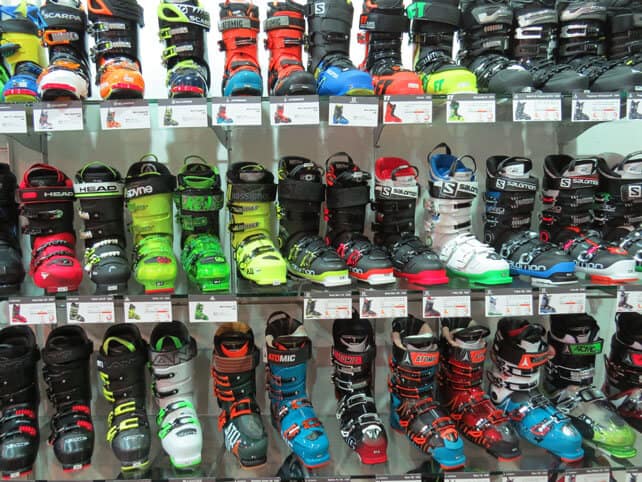
2. Go to a specialist boot fitter
Look for a shop which stocks a wide range of boot brands, and which can also make custom-moulded footbeds (also known as orthotics). Above all, you want to be served by a specialist boot-fitter, not a trainee or a jack-of-all-trades. Good fitters will have several years’ experience, so find out who’s the head of the department, or the name of the shop’s specialist fitter, and make an appointment. If you turn up on spec he/she will almost certainly be busy.
3. Give yourself plenty of time
There’s a lot to consider – as you’ll see from this feature! “Nothing good will come from rushing this process,” says James Choularton of Outdoor Traders in Abingdon. One of the acknowledged experts in the UK, he reckons you’ll need about two to two and a half hours to complete the process.
But it doesn’t end with the first fitting. Ideally, you should wear your boots in, and may need to go back to the shop for some tweaks too. So if you’re buying in the UK, don’t wait till the week before your holiday to do it – and book a session at an indoor ski slope so you can give them a test drive.
4. Wear the right clothing
Leave your skinny jeans at home: you want loose trousers that can be rolled up to the knee comfortably. You’ll also need a pair of thin, knee-high socks. If you don’t have anything suitable, buy a pair of specialist socks before the fitting starts, and wear those.
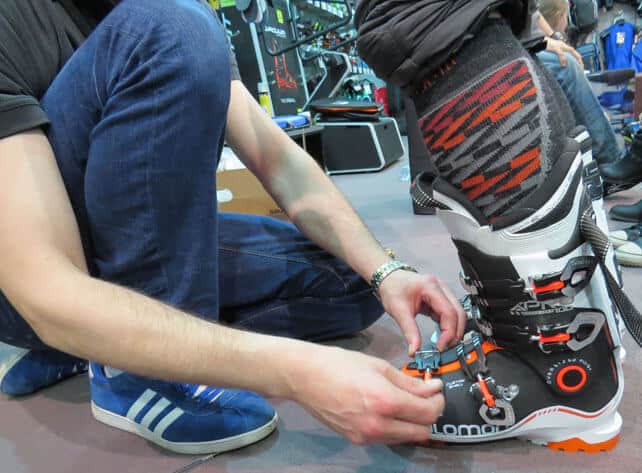
5. Talk about how you ski
The fitter will need to know your skiing history and about any injuries or medical problems you have. What kind of boots did you ski in before? What size were they? How did they feel? If you’ve already got a pair, try them on again, write down the size and make notes about any problems you’ve had.
When it comes to your skiing ability, don’t talk yourself up, or down. “I know this sounds like a sweeping generalization,” says Matt Hoslin, expert boot fitter at Ellis Brigham’s Covent Garden store, “but in my experience men overestimate their ability, and women underestimate theirs. Your best policy is honesty.” Be prepared to define your ability in terms of what kind of runs you ski, and what types of snow you can handle, too.
6. Remember: it’s not just the length of your feet that matters
Feet are not blocks of wood made to a standardised shape. “It’s not just the length and width of your foot that matters,” says Jock Dun of Snowberry in Val d’Isere, “but the overall distribution of volume”. Make sure your fitter is taking account of it.
At this stage, he/she should also be looking at how your feet and ankles move – otherwise known as your biomechanics. “Checking the range of ankle flexion is really important,” says Choularton of Outdoor Traders. The fitter should also be looking for signs of excessive pronation – which makes the foot roll inwards, and the instep collapse.
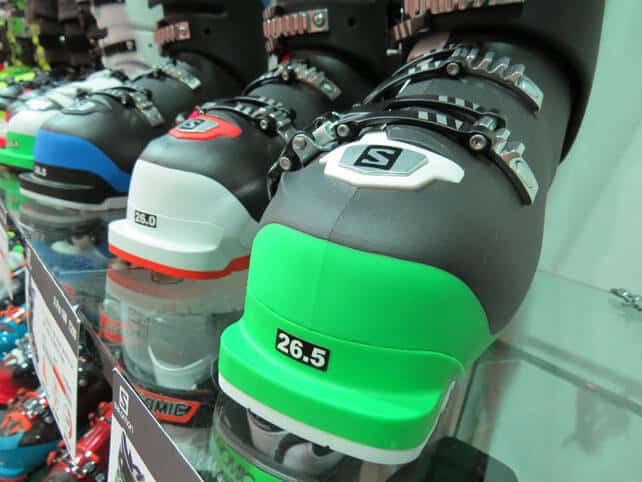
7. Sort out your custom footbed
“You have to remember that while a ski boot has a fixed shape and volume, your foot doesn’t,” say Jock Dun of Snowberry. “Its length, width, and the height of the instep all change as you flex backwards and forwards.” To reduce this shape-changing, the foot needs to be stabilised on a custom-moulded footbed, or orthotic, and there’s no point fine-tuning the fit of a ski boot until you’ve got one.
“More than two thirds of all boot fitting issues can be attributed to an unstable foot inside the boot,” says Choularton of Outdoor Traders. Even though it costs extra, it’s worth every penny.
8. Don’t set your heart on a particular brand
Next comes the actual fitting of the boot, which will start with the fitter trying your bare foot inside an outer shell. This will give him/her an idea of whether or not there’s a basic compatibility between your foot and the boot he/she has in mind for you.
Right from the start, you need to abandon all preconceptions about what make and model of boot you should have. Obviously your skiing ability will play a large part in determining this, but ultimately it’s all about fit. As Matt Hoslin of Ellis Brigham says, “Your foot chooses the boot, not you.”
Once your fitter has determined which boot to work with, the fine-tuning begins. An increasing number of boots have heat-moulded shells and liners, which give a more precise fit (although these processes won’t help if your foot is incompatible with the shape of the boot). However, more fundamental adjustments might have to be made.
After all, as Hoslin says, “there are only a small number of ski boot manufacturers, and millions of different feet”. As a result ski boots are designed to be tampered with, and your fitter will be able to stretch the shell and alter angles and flex.
Remember, it’s the fit of the boot all over your foot and ankle that matters. “Boots are fundamentally a prosthetic designed to allow the user to leverage and balance on top of their skis, says James Choularton of Outdoor Traders. “So time should be spent addressing balance and fit tension right around the foot.”
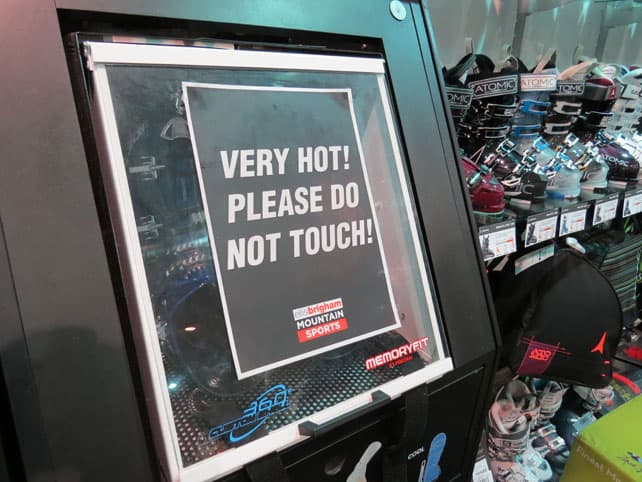
9. Don’t panic if they feel tight
New boots should feel tight when you put them on. You need to give the liner time to warm up, soften, and mould to the shape of your foot. In doing so, the liner’s also going to compress: giving your foot more room.
So don’t make any instant judgements about the fit. Get the fitter to show you how to buckle your boots properly, flex forward, so your heels fit into the back of the boots (giving your toes more room), and then wear them in the shop for at least 15 minutes. Try to replicate your skiing movements too. Only then can you talk about further fine-tuning, or trying on a different boot: and remember, more problems arise from people being fitted with boots that are too big than ones that are too small.
Even at this stage, they’ll still feel very snug. “They need to feel like a firm handshake around your foot,” says Dun of Snowberry. “It should feel like someone has hold of your feet with both hands,” says Hoslin of Ellis Brigham.
10. Wear them in
Finally, you’ll need to wear them in. If you’re buying in a ski resort, that will probably mean a day or two of discomfort as the boots settle in. If you’re at home, you can take your time: wearing them around the house and also trying them at an indoor snow centre. Then, and only then, should you take them back for further adjustments if you’re not happy.
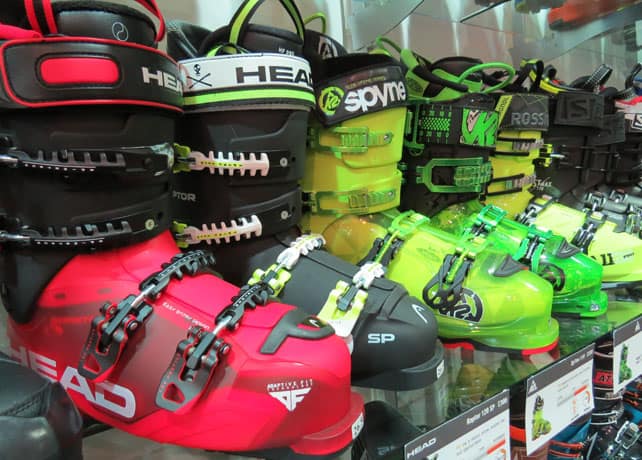
Do you have any favourite boots?
Is there something you would like to recommend? Do you have any favourite boots or any stories about ski boots you have owned? If so, leave a comment in the box below. Also see our features on buying ski gloves, ski helmets, and mountain safety equipment.










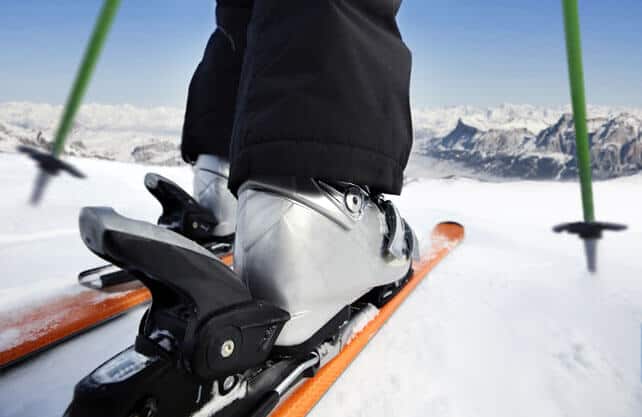


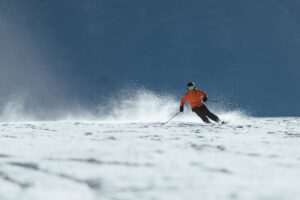
Sounds like you Lisa Gallis!
Last time I just super glued my favorite hiking boots to my skis.
What an exercise. Talk about Custom fit.
Try it……………you will leave all his other nonsense behind.
However if you a real wuse…go on with custom this and that.
Remember when we just used leather boots.
Soon they’ll have us having our asses custom fitted with foam…butt busters.
Time to get back to that ad .. as also the Cheney philosophy.
“That …..that strikes” first…wins…no matter how or what amount
of feet have to suffer to
prove the point.
Just ask Trickier Dickie Cheney..
It is rumored…even God stands aside when He walks in to the heavens…
Rumors………. only at present !
So get that Super Glue ready.
It is just not only for gluing your fingers together…after all !
Very funny!